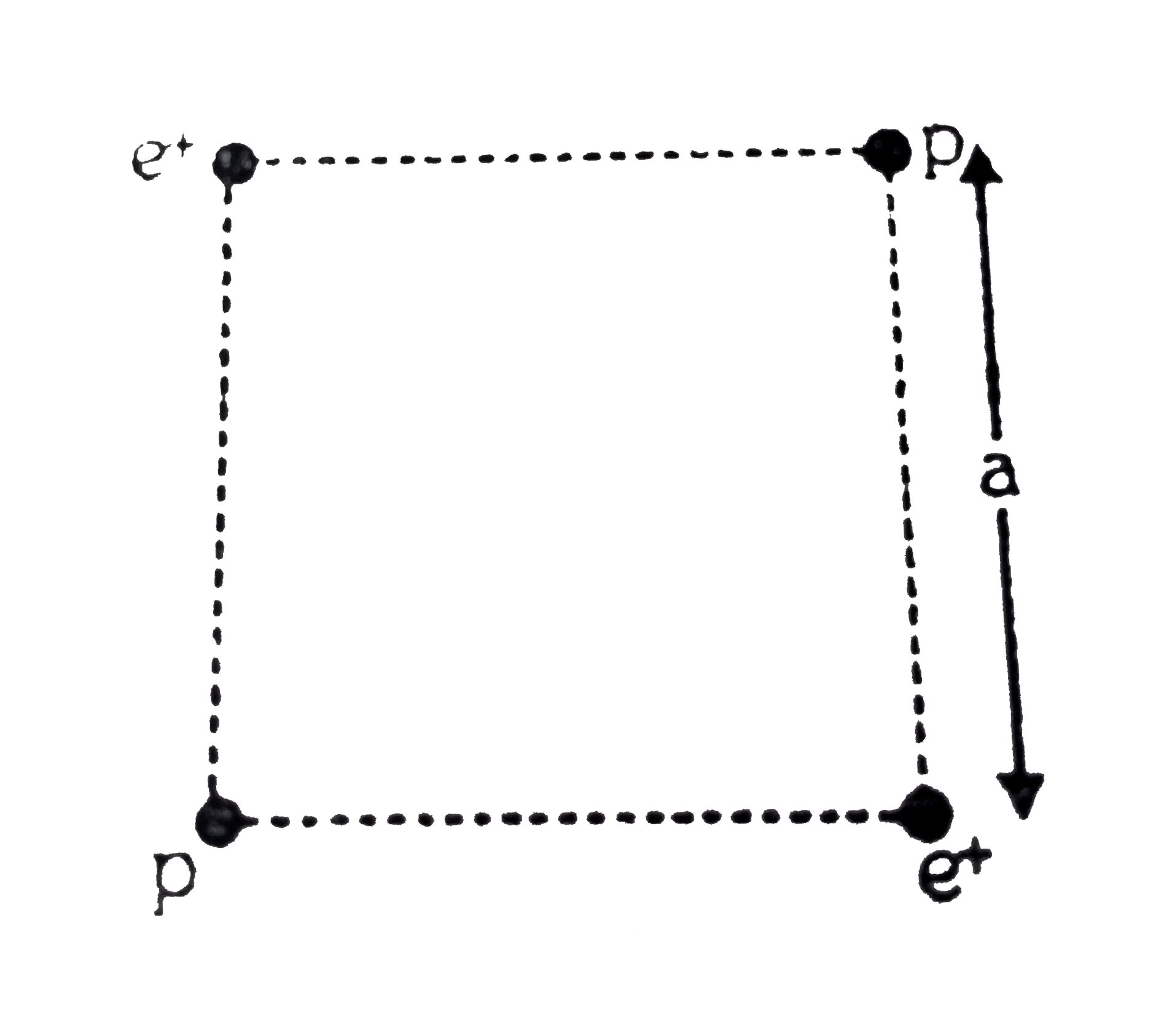In carbon-nitrogen nuclear fusion cycle, protons are fused to form a helium nucleus, positrons and release some energy. The number of protons fused and the number of positrons released in this process respectively are
4,4
4,2
2,4
4,6
The correct Answer is:B
To solve the question regarding the carbon-nitrogen nuclear fusion cycle, we need to analyze the process of fusion that occurs in this cycle. Here’s a step-by-step breakdown of the solution:
Step 1: Understanding the Fusion Process
In the carbon-nitrogen cycle, protons (which are hydrogen nuclei) undergo fusion to form helium. The process involves the combination of multiple protons.
Hint: Remember that fusion processes often involve the combination of lighter elements to form heavier ones, releasing energy in the process.
Step 2: Identifying the Number of Protons
From the carbon-nitrogen cycle, it is known that 4 protons are required to ultimately produce one helium nucleus. This can be represented as:
41H→4He
Hint: Look for the conservation of nucleons in fusion reactions; the total number of protons before and after the reaction must balance.
Step 3: Identifying the Number of Positrons
In addition to forming helium, the fusion process also releases positrons. In the carbon-nitrogen cycle, for every 4 protons fused, 2 positrons are emitted. This can be summarized as:
41H→4He+2e++energy
Hint: Pay attention to the byproducts of fusion reactions; they often include particles like positrons and neutrinos.
Step 4: Conclusion
From the analysis, we can conclude that during the carbon-nitrogen fusion cycle:
- The number of protons fused is 4.
- The number of positrons released is 2.
Thus, the answer to the question is:
- Number of protons fused: 4
- Number of positrons released: 2
Final Answer
The number of protons fused and the number of positrons released in this process respectively are 4 and 2.
---
In the carbon-nitrogen cycle, protons (which are hydrogen nuclei) undergo fusion to form helium. The process involves the combination of multiple protons.
From the carbon-nitrogen cycle, it is known that 4 protons are required to ultimately produce one helium nucleus. This can be represented as:
41H→4He
In addition to forming helium, the fusion process also releases positrons. In the carbon-nitrogen cycle, for every 4 protons fused, 2 positrons are emitted. This can be summarized as:
41H→4He+2e++energy
From the analysis, we can conclude that during the carbon-nitrogen fusion cycle:
- The number of protons fused is 4.
- The number of positrons released is 2.
- Number of protons fused: 4
- Number of positrons released: 2
The number of protons fused and the number of positrons released in this process respectively are 4 and 2.
Topper's Solved these Questions
- BOOK - AAKASH SERIESCHAPTER - NUCLEIEXERCISE - Exercise-II40videos
NUCLEI
- BOOK - AAKASH SERIESCHAPTER - NUCLEIEXERCISE - Practice Exercise40videos
NUCLEI
- BOOK - AAKASH SERIESCHAPTER - NUCLEIEXERCISE - Practice Exercise40videos
NUCLEI
- BOOK - AAKASH SERIESCHAPTER - NUCLEAR PHYSICSEXERCISE - ADDITIONAL PRACTICE PRACTICE SHEET (ADVANCED) Integer Type Questions3videos
NUCLEAR PHYSICS
- BOOK - AAKASH SERIESCHAPTER - OPTICAL INSTRUMENTS EXERCISE - PRACTICE SHEET (EXERCISE -I) (OPTICAL INSTRUMENTS) (LEVEL-I (MAIN)) (SUBJECTIVE OBJECTIVE TYPE QUESTIONS)21videos
OPTICAL INSTRUMENTS
Similar Questions
Knowledge Check
- Question 1 - Select One
In a nuclear fusion reaction, two nuclei, A & B , fuse to produce a nucleus C , releasing an amount of energy ΔE in the process.If the mass defects of the three nuclei are ΔMA,ΔMB & ΔMC respectively , then which of the following relations holds ? Here, c is the speed of light.
AΔMA+ΔMB=ΔMC−ΔE/c2BΔMA+ΔMB=ΔMC+ΔE/c2CΔMA−ΔMB=ΔMC−ΔE/c2DΔMA−ΔMB=ΔMC+ΔE/c2
Two positrons (e+) and two protons (p) are kept on four corners of a square of side a as shown in figure. The mass of proton is much larger than the mass of positron. Let q denotes the charge on the proton as well as the position then the kinetic energies of one of the positrons and one of the protons respectively after a very long time will be-
 View Solution
View SolutionFour nuclei of an elements undergo fusion to form a heavier nucles, with release of energy. Which of the two - the parent or the daughter nucleus - would have higher binding energy per nucleon ?
View SolutionHydrogen nucleus combines to form helium then energy is released.
Binding energy/nucleon of He is greater than hydrogen.View SolutionA single electron system has ionization energy 20902.2kJ/mo≤. Find the number of protons in the nucleus of the system.
View SolutionA nuclear reactor has a power of 16 kW. If the energy released per fission is 200 MeV, the number of fissions per second is
View SolutionTwo deuterons udnergo nuclear fusion to form a Helium nucleus. Energy released in this process is : (given binding energy per nucleon for deuteron = 1.1 MeV and for helium = 7.0 MeV)
View SolutionA deuterium reaction that occurs in an experimental fusion reactor is in two stage:
(A) Two deuterium (.21D) nuclei fuse together to form a tritium nucleus, with a proton as a by product written as D(D,p)T.
(B) A tritium nucleus fuses with another deuterium nucleus to form a helium .42He nucleus with neutron as a by - product, written as T (D,n) .42He.
Compute (a) the energy released in each of the two stages, (b) the energy released in the combined reaction per deutrium. (c ) What percentage of the mass energy of the initial deuterium is released. Given,
.21D=2.014102amu.31T=3.016049.42He=4.002603amu.11H=1.007825amu.10n=1.00665amu.View Solution

